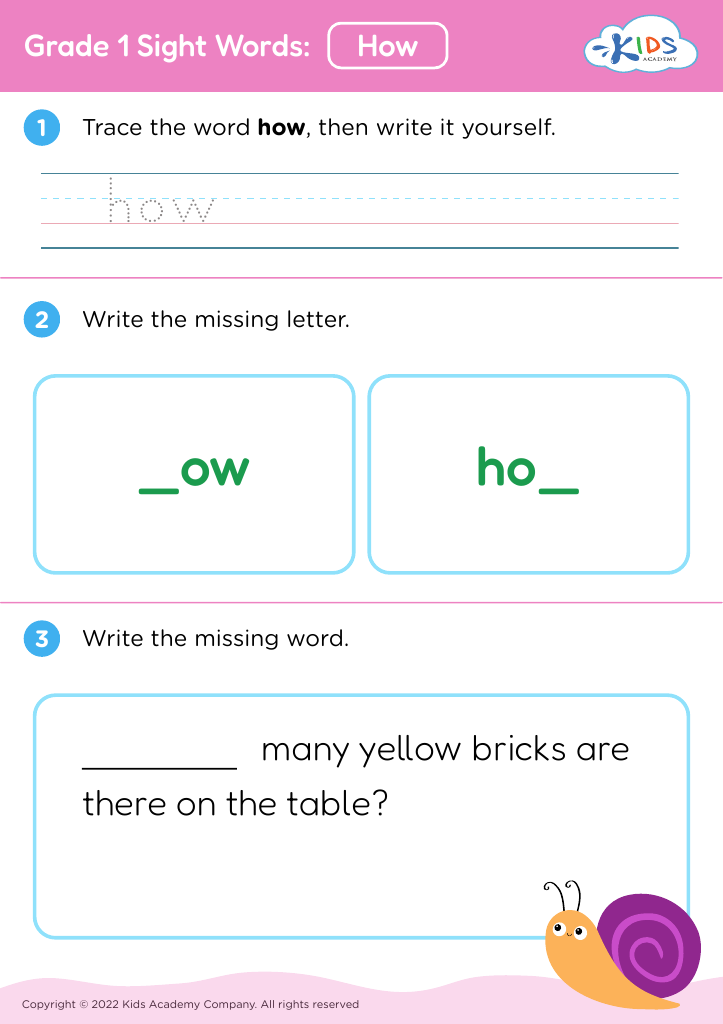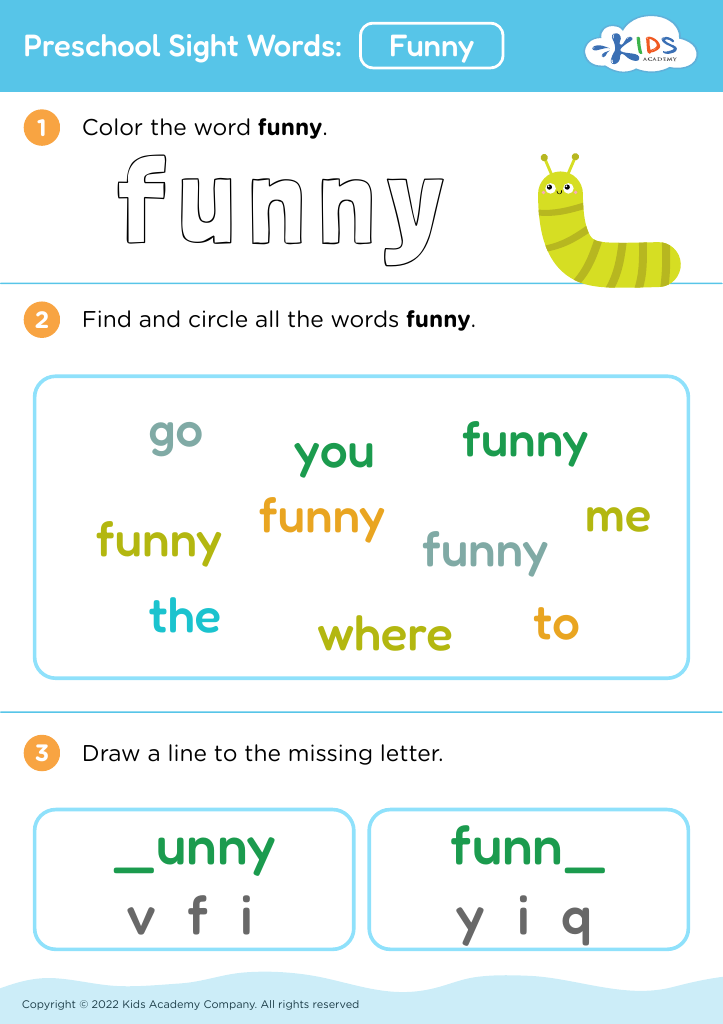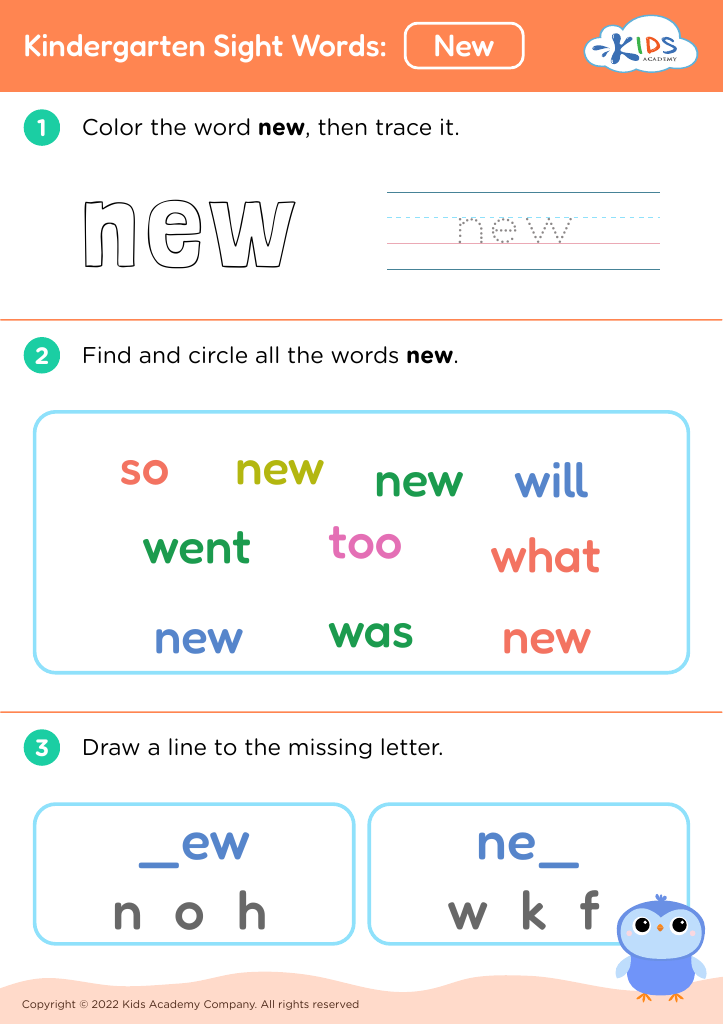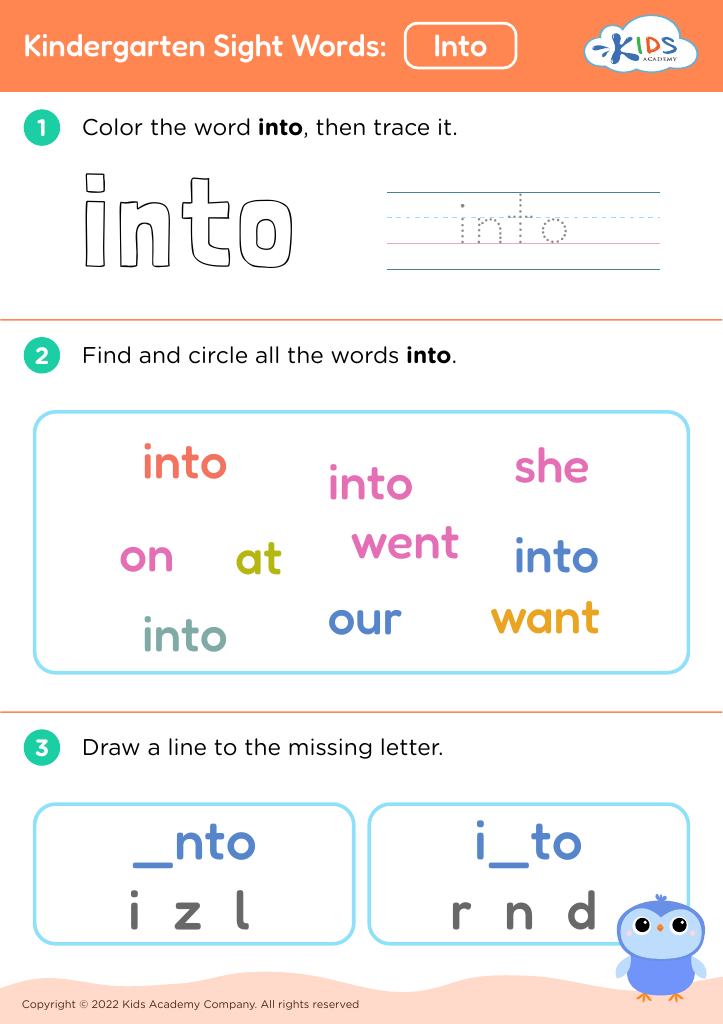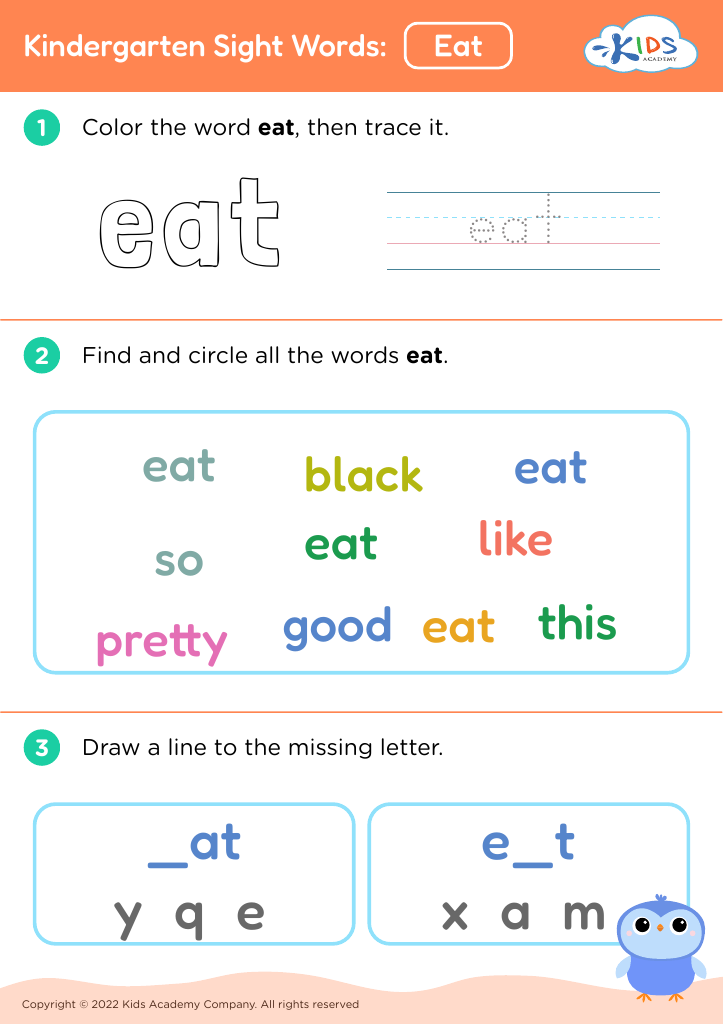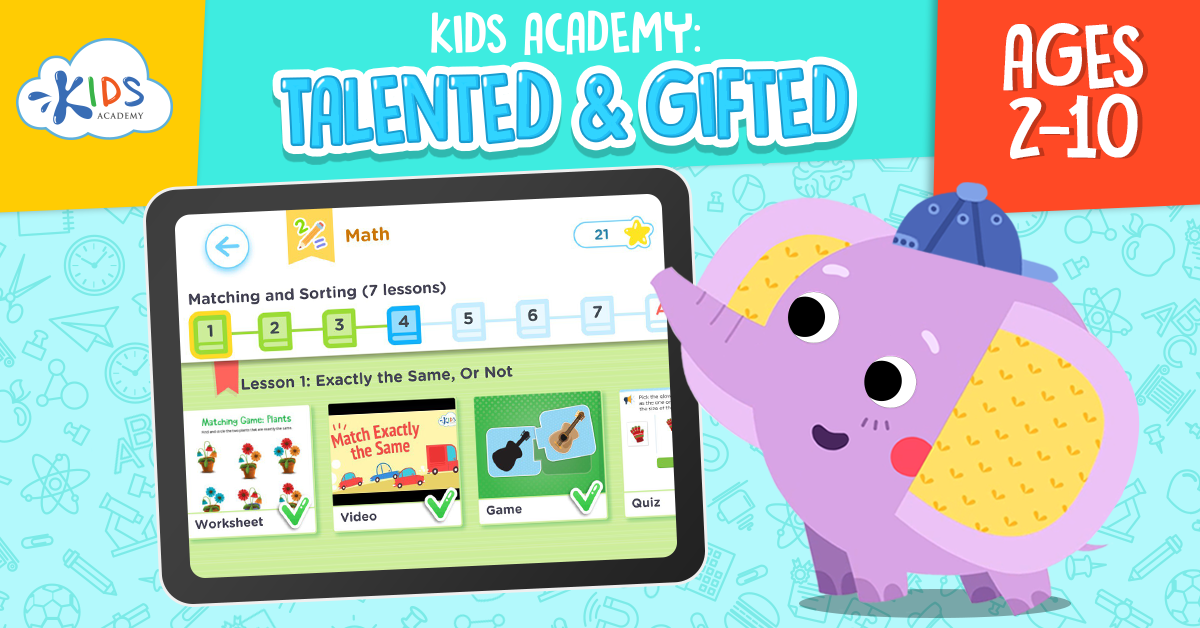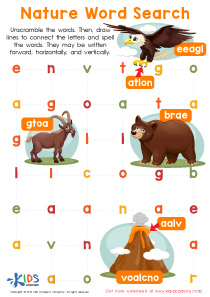Following instructions Sight Words Worksheets for Ages 3-6
5 filtered results
-
From - To
Discover our "Following Instructions Sight Words Worksheets" designed specifically for children aged 3-6. These engaging printable activities help young learners develop essential sight word recognition while honing their ability to follow directions. Each worksheet combines fun and educational tasks, encouraging children to practice reading comprehension and verbal instructions. With colorful illustrations and interactive prompts, your child will enjoy improving their literacy skills in a playful way. Perfect for use at home or in the classroom, these worksheets provide a solid foundation in early reading, ensuring a smooth transition as they progress in their educational journey. Engage, learn, and unlock literacy together!
Following instructions and learning sight words are crucial for early childhood development, particularly for children aged 3-6. First, proper instruction-following lays the foundation for comprehension skills essential for later academic success. When children learn to listen, understand, and act upon directives, they become better equipped to engage with complex tasks, both in school and beyond.
Sight words, which are commonly used in reading materials, are vital for building reading fluency. Recognizing sight words helps children decode texts more easily, allowing them to focus on comprehension rather than getting bogged down by pronunciation. This skill boosts confidence and fosters a love for reading.
Moreover, fostering a habit of following instructions enhances a child’s ability to interact with peers and adults, promoting teamwork and social skills. It helps them understand sequences and improves their ability to complete tasks, which is critical as they begin to take on more responsibilities in a classroom setting.
In short, prioritizing instruction-following and sight word recognition provides children with essential tools for learning, communication, and social interaction. These skills set the stage for lifelong educational and personal successes, making it a significant focus for parents and teachers alike.

